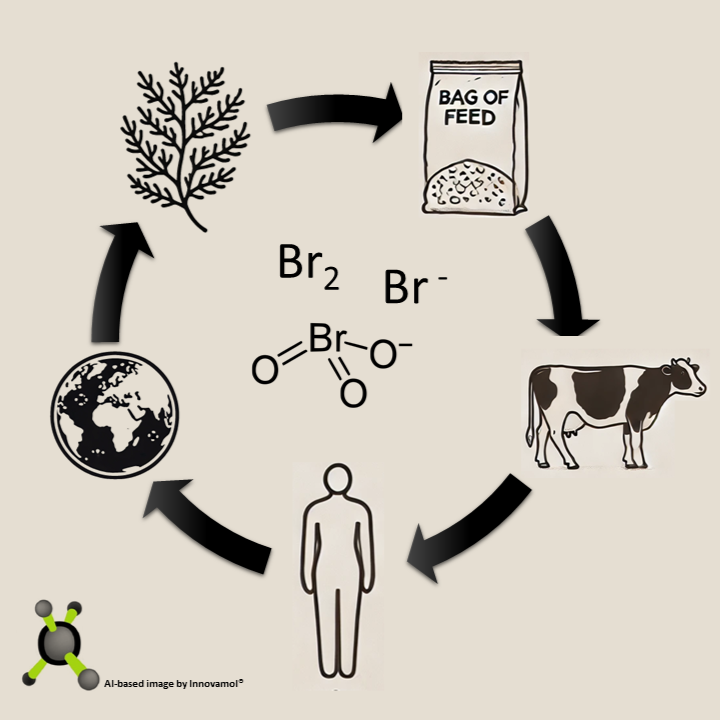Did you know that bromine, along with its ions bromate and bromide, plays a significant role in the composition of animal feed? Bromine is a naturally occurring element found in various sources, including algae and seaweed, which can be used in animal nutrition. For instance, Asparagopsis armata (Figure below) produce halogenated metabolites that are stored as a refractile inclusion inside specialized gland cells, and are activated with bromine.

Despite its prevalence, the implications of bromine in feed, particularly its effects on animal health and the transfer of residues to food products of animal origin, have not been fully understood until recent studies. In 2023 our team embarked on a project with the European Food Safety Authority (EFSA) to perform a comprehensive systematic review (SR) on this topic, providing insights for future risk assessments and regulatory measures, which culminated in our publication. The study screened over 30 000 references, filtering them through inclusion and exclusion criteria to obtain 100 non-redundant and relevant documents, spanning six key areas:
- analytical techniques for quantification of bromine compounds in feed,
- occurrence and formation,
- exposure of animals,
- toxicokinetics,
- toxicity,
- the transfer of bromine from feed to food products.
This review not only highlighted the current state of knowledge but also underscored gaps that warranted further investigation. Because of this, EFSA’s Methodology and Scientific Support Unit (MESE) recently launched a scientific consultation titled “Draft Scientific Opinion on the Risks to Human and Animal Health from the Presence of Bromide in Food and Feed”, which will remain open until 6 September 2024. The purpose of this consultation is to gather comments and opinions from stakeholders, including government authorities of member states, companies, and the general public, who have an interest in the risks associated with bromide ions in food and feed. The consultation aims to address concerns regarding the potential impacts on animal health and, as a consequence of the transfer from feed to food, on human health. It particularly focuses on bromine found in algae, seaweed, and their derived products, which are a major source of bromine ions. This inclusive approach ensures that diverse perspectives contribute to the final scientific opinion, enhancing the robustness and comprehensiveness of EFSA’s risk assessment.
We in Innovamol consider of primary importance the continual vigilance and adaptive strategies in feed and food safety regulations carried out in a transparent and inclusive approach. The collective effort to understand and mitigate risks associated with bromine will not only enhance our scientific knowledge but also ensure the protection of both animal and human health in our evolving agricultural landscape.
“La comida no es segura hasta que no es segura para todos” (Food is not safe until it is safe for everyone) – Dr. Margaret Chan, Former Director-General of the World Health Organization (WHO)

